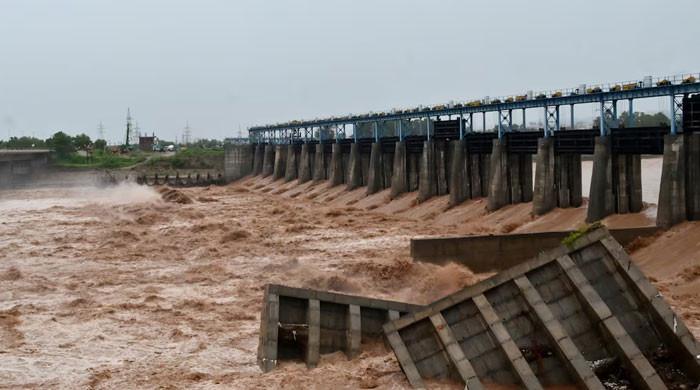Pakistan Grapples with Severe Floods Amidst Treaty Concerns
Pakistan is facing an intense and extraordinary flood situation, intensified by unexpected water discharges from Indian dams.
Adding to the difficulty is India’s choice to put the Indus Waters Treaty (IWT) on hold, an agreement that has regulated shared water resources for over six decades.
As Pakistan contends with unprecedented flooding, worries are escalating regarding India’s non-compliance with the IWT. Allegations have surfaced, claiming that New Delhi has neglected its essential responsibilities concerning prompt flood warnings, particularly as the Chenab, Ravi, and Sutlej rivers in Pakistan reach dangerously high flood levels.
Treaty Obligations
According to the 1960 Indus Waters Treaty, both India and Pakistan have certain duties designed to prevent substantial damage caused by water flows.
Article IV-8 explicitly states that each party must inform the other as far in advance as feasible regarding any extraordinary water discharges from reservoirs and flood flows that may affect the other party.
Furthermore, Article IV-9 details each party’s intention to operate its storage dams, barrages, and irrigation canals in a manner that avoids, as far as possible, material harm to the other party.
Concerns Over India’s Actions
However, there have been inconsistencies in India’s adherence to these obligations. While Pakistan reportedly received an alert about a potential flood in the Tawi tributary of the Chenab River, a crucial failure occurred in sharing updated information about the Sutlej River.
By the time the Tawi alert was issued, the Sutlej had already reached high flood levels, exceeding 122,000 cusecs, leaving South Punjab with insufficient time to prepare for the increasing waters.
This lapse in information sharing is especially concerning given India’s decision to suspend the Indus Waters Treaty. Soon after suspending the IWT, India reportedly decreased outflows from the water reservoirs constructed on the Chenab River to minimum levels, causing a water shortage amid high irrigation demand. Consequently, Pakistan had to release water from the Mangla Dam to compensate for the deficiency in the Chenab River.
As previously indicated, the suspension of the IWT by India has disrupted formal data exchange and cooperative mechanisms, resulting in less advance notice for Pakistan to manage its rivers and mitigate flood impacts.
The combination of substantial monsoon rains and these unannounced or delayed water releases from Indian dams is intensifying Pakistan’s water crisis. This poses a threat to its agricultural sector, economic stability, and water security, potentially leading to widespread food insecurity and public unrest.
Current Flood Levels
The Flood Forecasting Division’s report paints a concerning picture. The Chenab, Ravi, and Sutlej rivers are experiencing dangerously high flood levels. The Chenab River is at an extremely high flood level at all monitoring sites, with a massive outflow recorded at Qadirabad. The Sutlej River is also in an exceptionally high flood at Ganda Singh Wala, while the Ravi River is at a high flood at Shahdara.
This severe flood follows India’s announcement to hold the IWT in abeyance. This action has halted the sharing of hydrological data and cooperative mechanisms. Without this information, Pakistan has less advance warning to manage water flows and mitigate flood risks.
According to an official, the formal flood alert shared recently by India was not very helpful for well-timed precautionary measures. This was partly because India did not share data on releases from all its water reservoirs on eastern rivers, unlike previous practice.
In this situation, where outflows from the upper riparian region are uncertain, the river inflows downstream emphasize the precarious water management situation, highlighting the need for precise coordination and monitoring to mitigate potential flood risks and ensure optimal water utilization.
While the Indus River at the Tarbela Dam, the Jhelum River at the Mangla Dam, and the Kabul River at Nowshera exhibit moderate and stable flows, other key rivers, especially those originating from or passing through India, are under significant pressure.
The Chenab River at Marala has high inflows, with similar outflows. Barrages downstream are also managing high flows, including Chashma Barrage and Taunsa Barrage.
The ongoing floods could severely affect the country’s agricultural sector, which is crucial to its economy. The crisis presents a significant risk to economic stability and food security, potentially causing public unrest as the humanitarian situation worsens. With continued heavy monsoon rains and the suspension of the IWT’s data-sharing mechanism, Pakistan faces a severe water crisis.



Comments (0)
No comments yet. Be the first to comment!
Leave a Comment